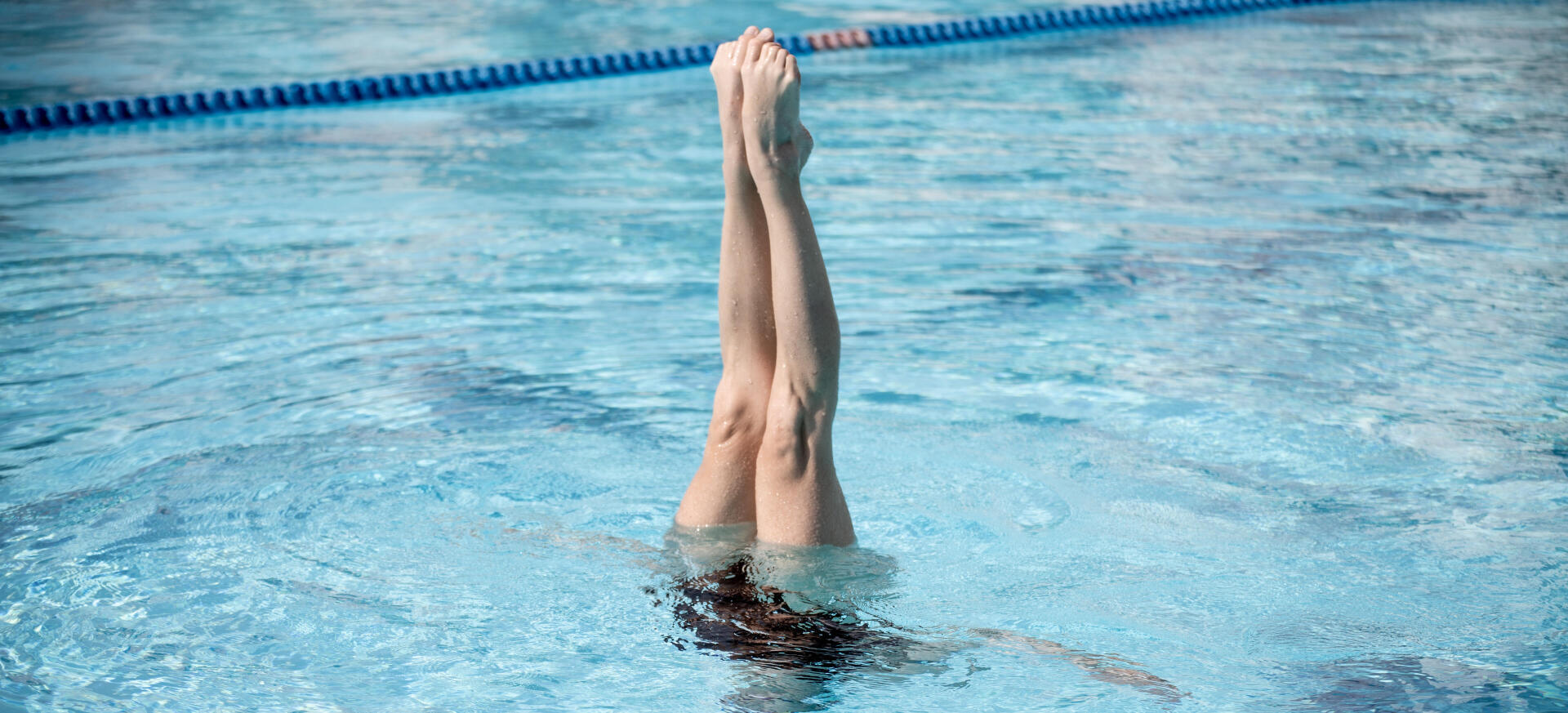What is a vertical
in synchronised swimming?
Virginie Dedieu: The terms “vertical” refers to the position of the swimmer's body when in this position. They are upside down and completely submerged. Their feet are above the surface, pointing upwards. This is not a “balancing act” in the gymnastic sense of the term, because their hands are not pressing against the bottom of the pool. They paddle, or scull, with their forearms in order to stay underwater.
In a vertical, the goal is to push your legs as high as possible above the surface of the water, while remaining perfectly vertical!







